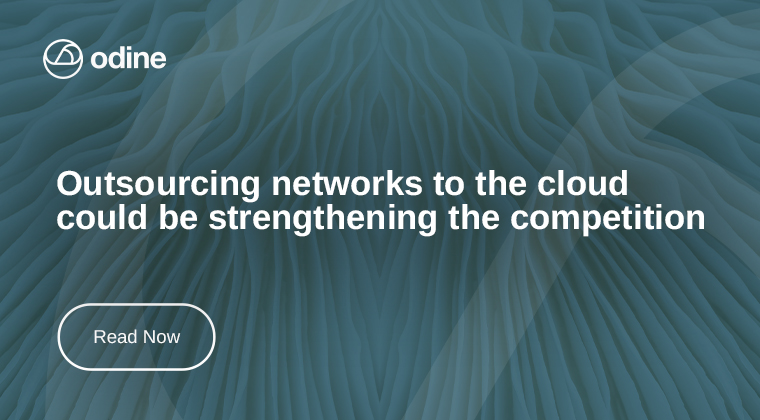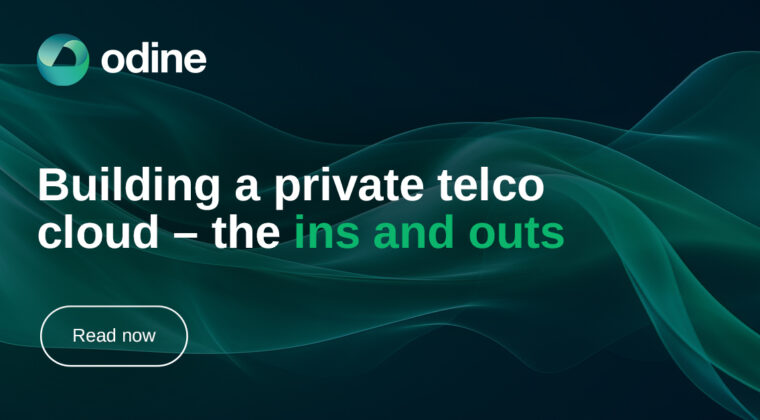One of the big questions for telcos today is not whether they transition to the cloud, but how. Gartner forecasts a global spend of $397.5 billion on public cloud in 2022, a significant increase from the $270 billion in 2020. In fact, global investment into cloud has been encroaching upon expenditure for legacy telco IT and IDC quotes that “spending on compute and storage infrastructure products for cloud infrastructure will continue to outpace non-cloud IT infrastructure investments”.
The ongoing pace of market evolution – including the rise of hyperscalers, 5G, and post-pandemic consumption – is quickly driving the debate between public, private or hybrid cloud forwards. Plus, emerging technologies like containerisation are encouraging additional investment into the cloud.
Current trends show popularity of the public cloud growing. Claims such as it’s “the year of the public cloud”, or that “it’s time for telcos to worry about the public cloud”, feature across industry discussion.
At this key moment of evolution, telcos need to remind themselves of past mistakes and ensure they don’t repeat history. McKinsey states how, “those providing the connectivity upon which other industry participants depend—lost more and more ground with the introduction of 3G, and then 4G technology”. These techs in turn facilitated OTT communications, which started to saturate consumer demands. Disruptors who embraced this change were then able to take over the market.
In contrast, legacy telcos were unable to adapt in order to fully monetize these opportunities, and so started to underperform compared to other industries.
Now as the cloud emerges, telcos must use their learnings to shape their cloud strategy by finding an effective balance between public and private options.
Outsourcing to the cloud could mean outsourcing your value
While the cloud offers many benefits that are drivers for the growth of telecoms, from reduced IT resource and hardware spend to increased agility and functionality, a completely outsourced public cloud strategy could prevent them from maximizing their value.
By outsourcing their entire network infrastructure, telcos risk losing ownership of their USPs and propositions that define their place in the telecoms market. In a post-covid economy where telcos must “design a new, value-creating role for themselves” (McKinsey), this is a loss they can’t necessarily afford.
Ian Morris at LightReading warns of the risks of the telecom industry “being swallowed by the same public cloud giants” they hope to outsource to. Although partnership deals between operators and public cloud platform providers have promised opportunities for new sources of revenue, these same deals can encroach upon operators’ ability to evolve and provide new services.
This was demonstrated by Ericsson’s Edge Gravity failure, and Deutsche Telekom’s similar experience with MobiledgeX, recently acquired by Google.
Hyperscalers are a huge threat to telecoms’ survival, giving these players control over the telco networks is akin to giving them the keys to your safe. Morris reiterates this sentiment, quoting that the biggest threat in this approach is that “operators have retreated almost entirely from service and platform development and settled for a utility role as connectivity providers”, all the while being commoditized by giant cloud competitors which are already dominating the space. In fact, research already shows that 80% of the public cloud market is being controlled by a mere five organizations – AWS, Microsoft Azure, Google Cloud, IBM, and Alibaba.
Therefore, telecoms providers should consider keeping their competitive advantage secured within their own private cloud or hybrid network.
Other potential negatives telcos should consider include the high costs of a fully managed service, especially if they try to lift and shift legacy applications to the cloud, and the security of their data being controlled by external providers. The latter in particular could be a significant drawback for government audiences, who may not feel confident putting a critical national infrastructure asset into the hands of international providers. Private cloud may even be a requirement for compliance with certain geopolitical, government, and industry regulations.
Having this in a private cloud network instead ensures you maintain control over critical national infrastructure.
Where the public cloud will be needed
Despite the potential risks, public clouds can’t be ignored. Many enterprise customers are opting for a cloud approach with Gartner predicting that 40% of enterprise workloads will be deployed in CIPS by 2023.
Similarly, The World Economic Forum expects the enterprise market for 5G and edge to exceed $13 trillion, an upwards trend which can only be supported through the integration of public cloud infrastructure. Some enterprises will rely on the cloud to support their business services, while others will reserve it for certain applications or additional space when needed – either way, this is an audience that telcos need to accommodate in order to maintain their market share.
For this reason, telcos must provide a public cloud offering for enterprise customers, which will support the agile allocation of workloads, low latency, and other business-focused needs.
Private and public cloud can co-exist
Even with the rise of public cloud, private still has an integral place in the future of telecoms. While public can service your enterprise customers, private can securely host your core functions. Various market trends and predictions already show that organizations will likely embrace a strategic integration of different cloud solutions in the near future, among other best of breed technologies:
Telecom Review – In fact, IDC says that by 2022, more than 90 percent of enterprises worldwide will rely on a mix of on-premises or dedicated private clouds, multiple public clouds and legacy platforms to meet their infrastructure needs.
Gartner – By 2025, 85% of infrastructure strategies will integrate on-premises, colocation, cloud and edge delivery options, compared with 20% in 2020.
Moving away from traditional business models with advanced technologies will allow telco industries to add value and remain competitive in their marketplace. While maintaining a private cloud presence for radio, core, and transport networks will protect the business functions with the highest value and address key challenges associated with an entirely outsourced public cloud strategy; i.e., regulatory, security, and governance concerns.
This is the best of both worlds. It allows telcos to own their network infrastructure, secure their access and data control, and maintain direct communication with their customers. All while still delivering all the benefits of the cloud, such as minimised OPEX, reduced hardware maintenance and costs, and increased agility and functionality for growth.
Consider collaboration with competitors
There is also still opportunity to collaborate with hyperscalers to create this ecosystem of public and private cloud offerings if done with strategic consideration. Accenture shows that enterprises are working with 2 or more hyperscaler providers because of their scale, expertise, and innovation. These are benefits that telcos can take advantage of to help customer retention if they partner to provide specific enterprise services, but as mentioned, build their own telco clouds for core functions.
This would both keep hyperscalers from taking over the market, and ensure telcos don’t lose out on monetization opportunities by switching to the public cloud, and if telcos can manage to add value to newer rising markets, such as OTT, they can regain a share of the revenue of this market independently of other players.
Systems integration
This is what Odine do best. We are a Cloud-first systems integrator working with global partners to build the networks of the future. Odine can orchestrate your own private or hybrid network architecture and onboard all of the best of breed technologies you need, ensuring every component part is unified.
With our leading expertise in this area, we’ll help you confidently transform your networks and seize untapped opportunities for growth.























